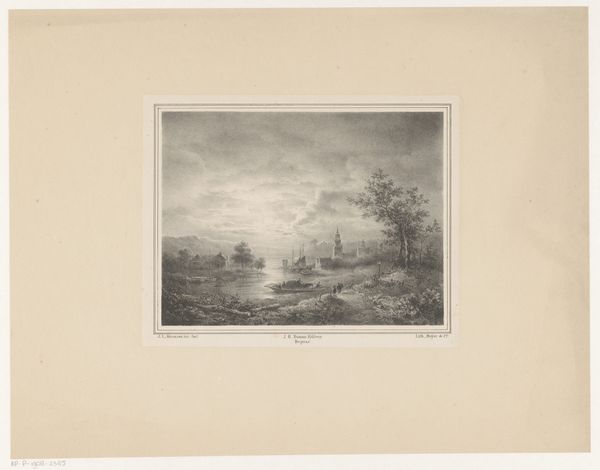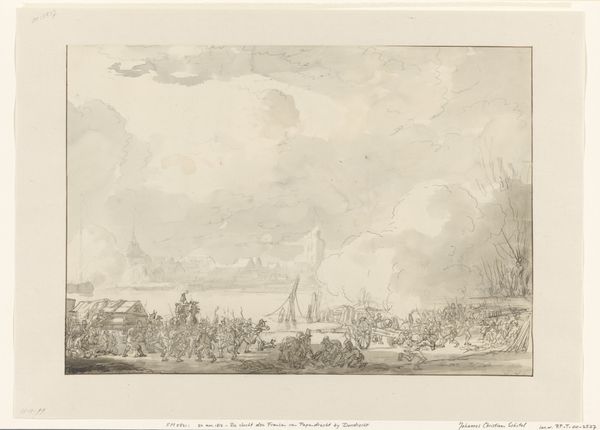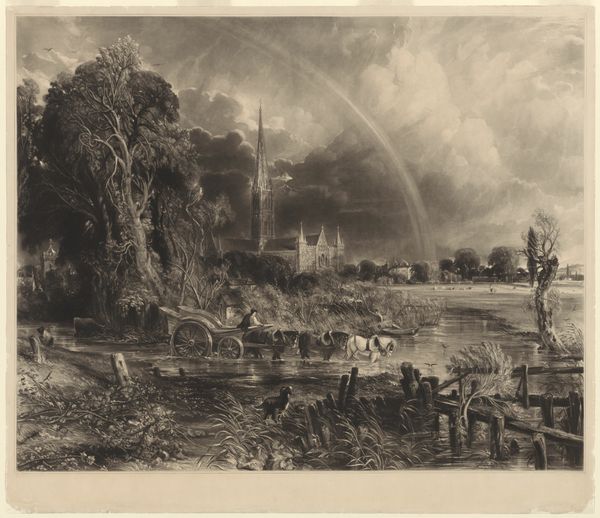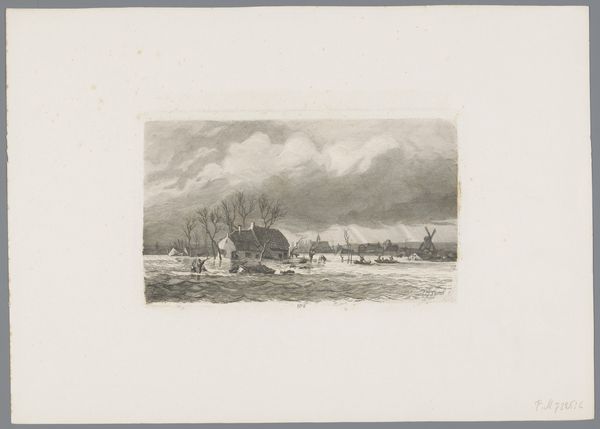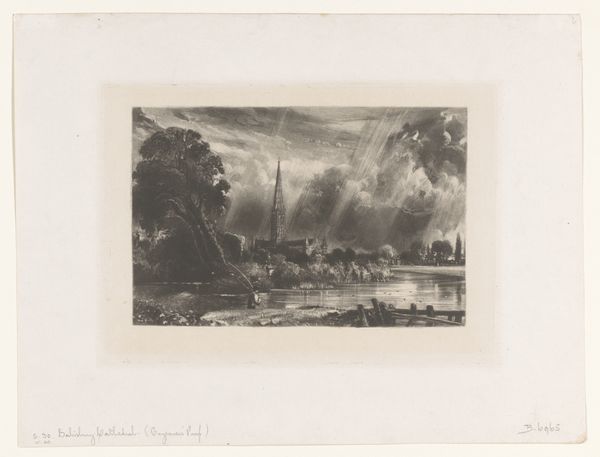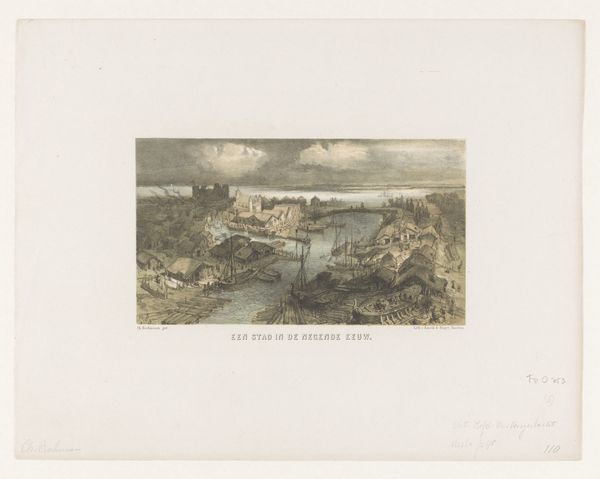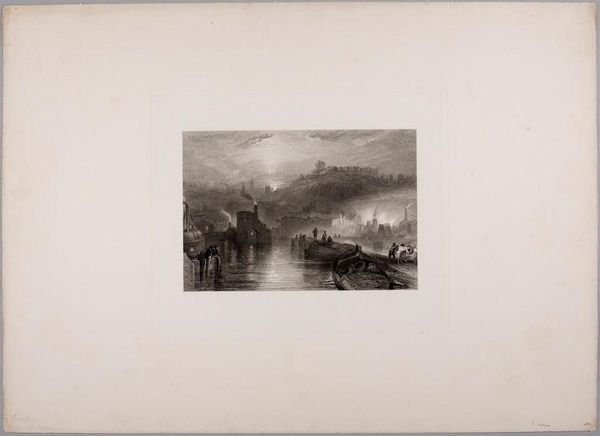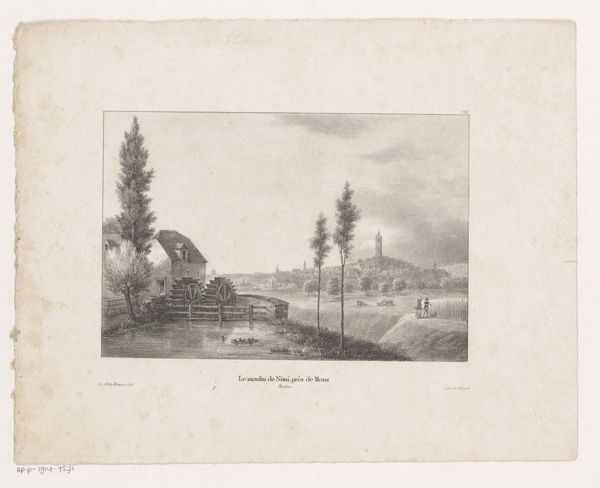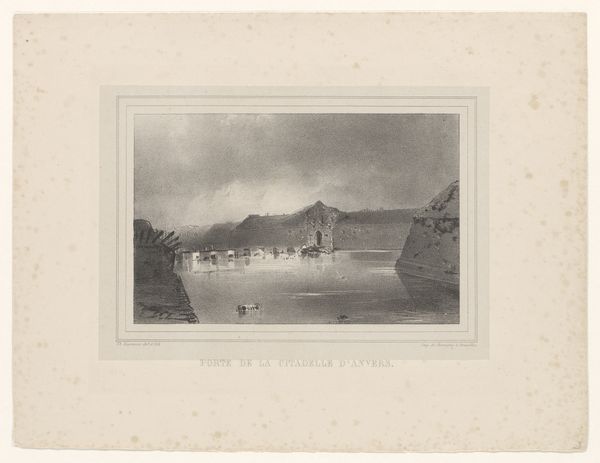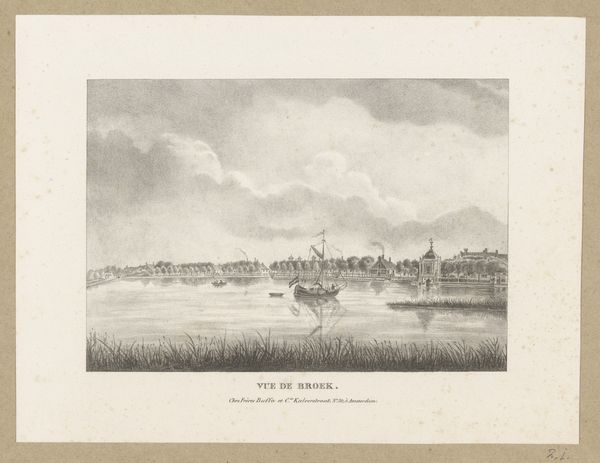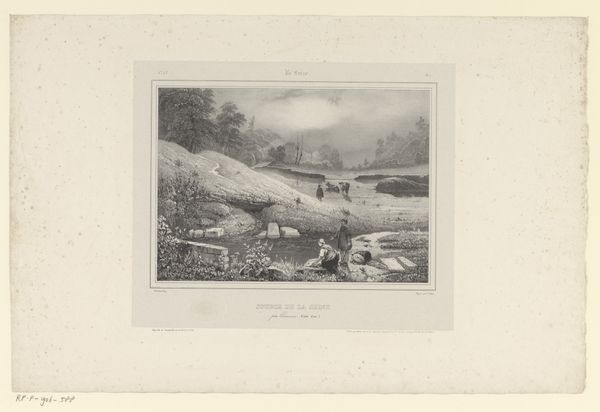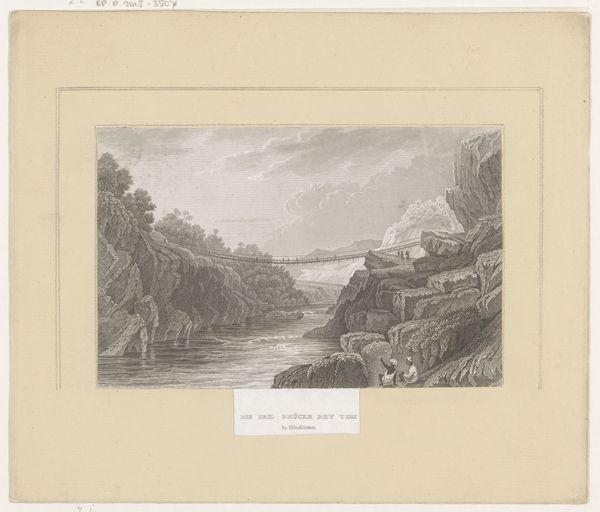
print, etching
#
narrative-art
# print
#
etching
#
landscape
#
river
#
romanticism
Dimensions: height 365 mm, width 551 mm
Copyright: Rijks Museum: Open Domain
Curator: Here we have "Vernielde brug, 1832" created in 1833 by Auguste Raffet. This print, an etching, is part of the Rijksmuseum collection. What are your first thoughts? Editor: A powerful stillness. The grayscale lends it a timeless, almost archetypal quality. The composition, split between water and sky, amplifies the feeling of melancholic reflection, would you agree? Curator: Definitely. Raffet really captures that Romantic sensibility—nature reflecting human drama. Notice how the destroyed bridge becomes a potent symbol of the era’s upheaval. Bridges often symbolize connections and progress; its ruin here speaks to fractured societal bonds. Editor: And formally, that fractured line directs the viewer's eye. The broken horizontal of the bridge contrasting against the smoother plane of the water creates a disquieting tension. Semiotically, you could argue that Raffet is deploying fragmentation to mirror… Curator: …fragmented memory, perhaps? Etchings, as a medium, also have their own history and symbolic load, suggesting careful preservation through multiples and their subsequent accessibility to diverse audiences. The print embodies a democratized romanticism if you will. Editor: Interesting. I was going to suggest the rigorous process of the etching parallels themes of destruction followed by a painstaking reconstruction, visible even in how light and dark values model shape and distance. Notice how those values are primarily structured into an exploration of the river area, subtly referencing historical themes. Curator: I see that. I read the characters in the river, foregrounded to emphasize our shared humanity— wading and struggling amidst wreckage with that damaged bridge linking them and their landscape to the past. Editor: So, the material and thematic composition serve each other by subtly suggesting multiple relationships… Curator: Precisely. The medium emphasizes shared and remembered experiences—a common response to political uncertainty after conflict. Raffet masterfully transforms an isolated, damaged bridge into a representation of wider human suffering. Editor: Indeed. It's a fine study in formal tensions, each one resonating to convey trauma with its formal choices as an etching. Curator: I concur. The enduring allure is its potent mix of human emotion through starkly defined form. Editor: Well observed, and now the formal clarity enables us to more richly understand Raffet’s historical interpretation.
Comments
No comments
Be the first to comment and join the conversation on the ultimate creative platform.
